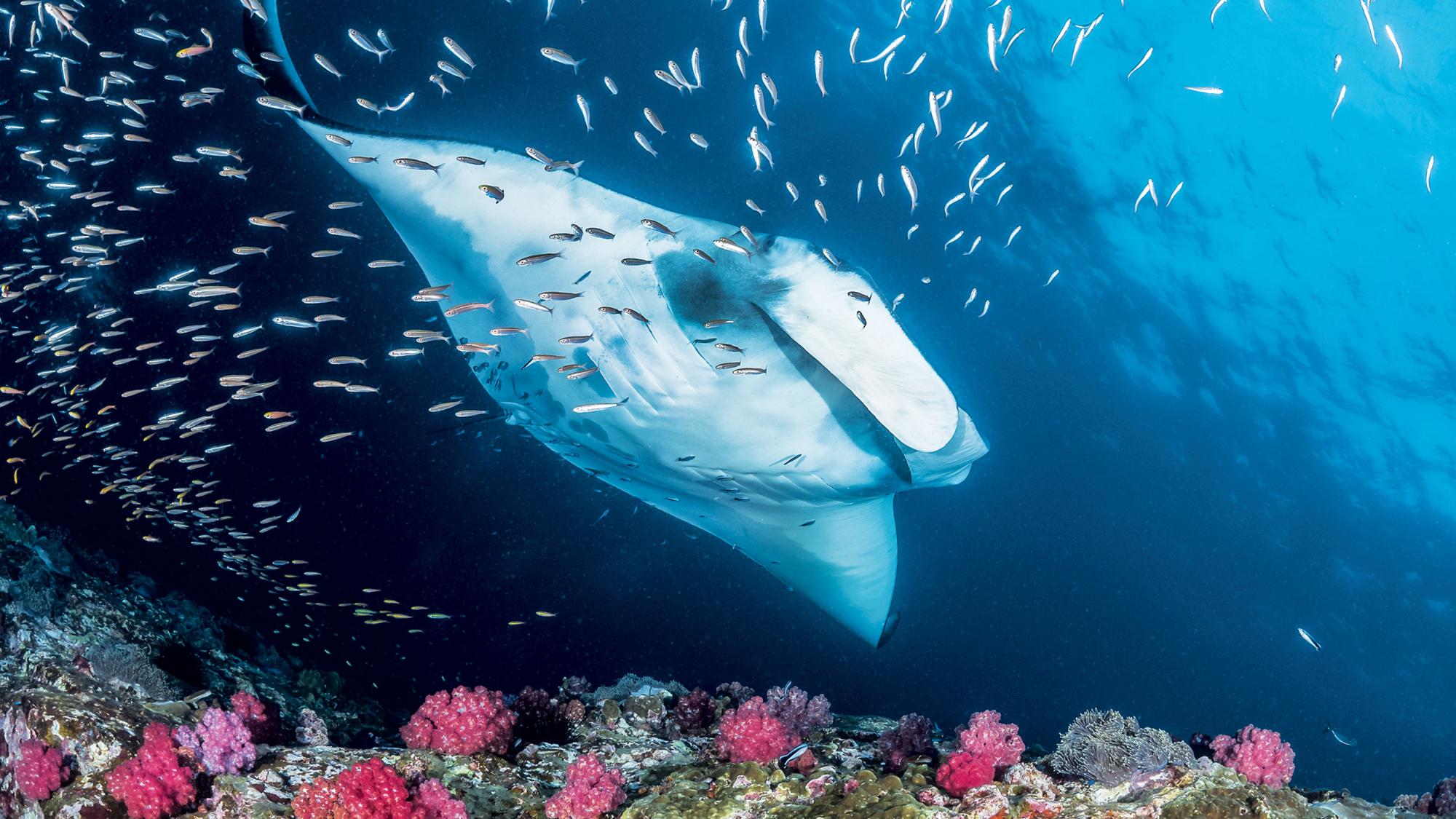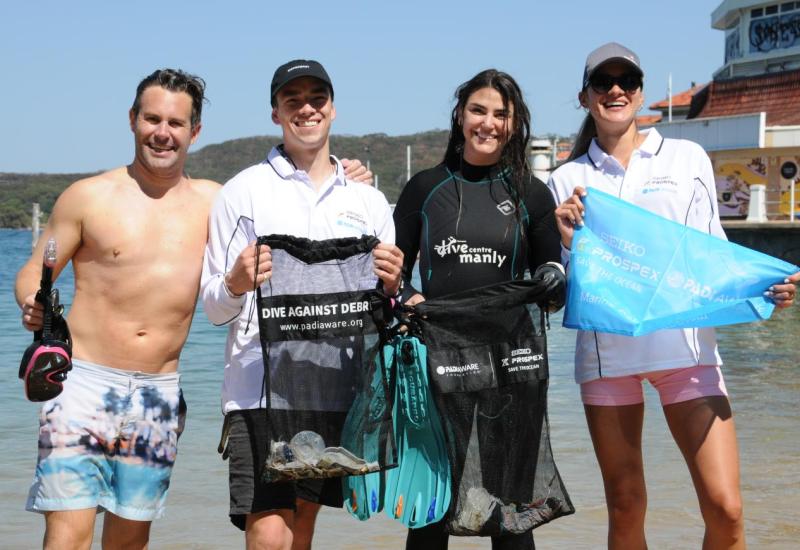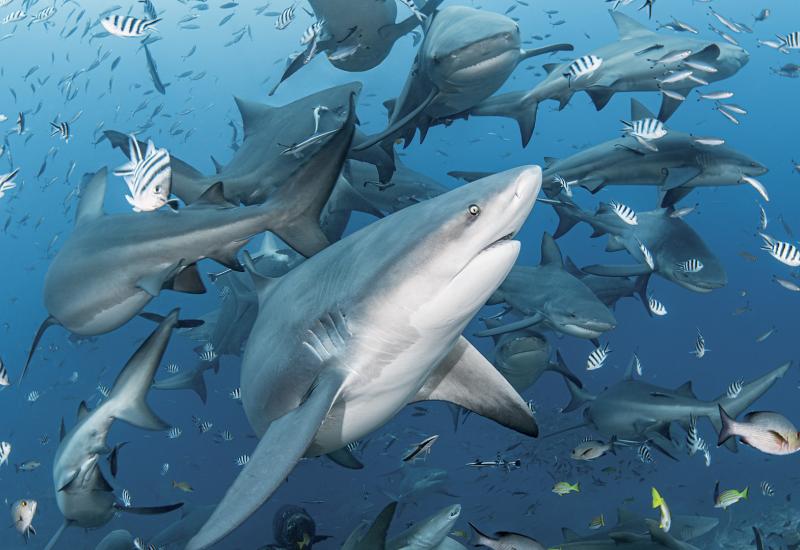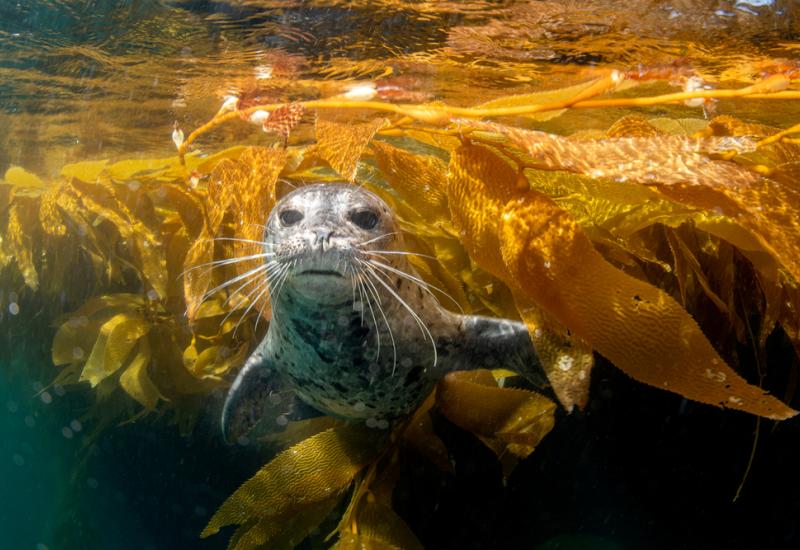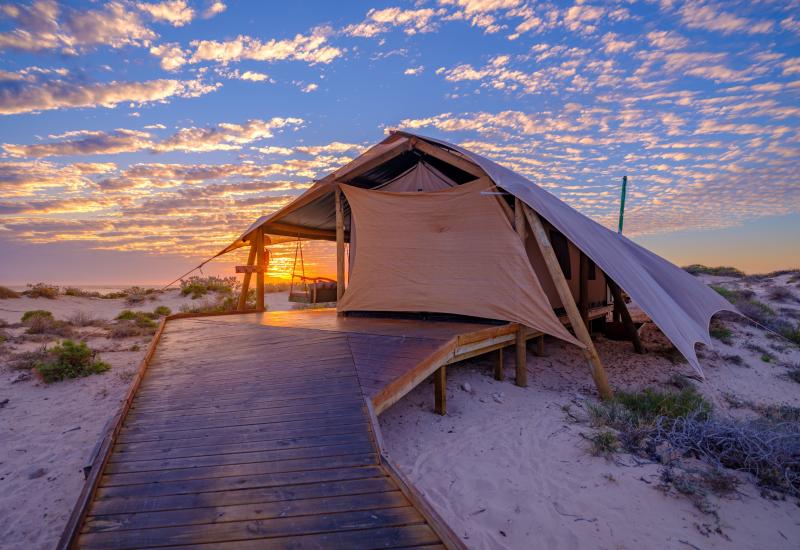Tracking the Bountiful Manta Population in the Andaman Sea
I stare out into the blue, index finger resting on my camera’s shutter release, exposure settings dialed in. A dark object appears in the distance, gradually increasing in size until I make out an enormous manta ray heading straight for me. As it soars within range, I raise my camera, placing the viewfinder against my mask, waiting for the critical moment to shoot. This huge fish is on a collision course with me, but I hold my ground in this aquatic game of chicken, and — at the last possible moment — a quick flap of its giant wings sends it soaring inches over my head just as I release the shutter. Nailed it.
THE MISSION
I’m at Black Rock, a solitary rocky islet at the far western edge of the Mergui Archipelago that’s a 14-hour overnight journey northwest from Kawthaung, on the border of Thailand and Myanmar. This is the region’s premier aggregation site for oceanic manta rays, accessible only via liveaboard due to its remote location. It’s day two of a special charter organized by Off the Chart Expeditions in association with the Marine Megafauna Foundation, and I’m here as the photo pro.
The goal of the trip is to gather photo identifications for submission to the Manta Matcher database to assist with research of the Indian Ocean population of Mobula birostris. The 92-foot Deep Andaman Queen is our dive platform for this epic 800-mile journey that will see us venture to West Canister Island at the far north of the archipelago, west into the open ocean to dive the Burma Banks, to the more commonly dived Western Rocky, and finally the iconic Thai sites of Richelieu Rock, Koh Tachai and Koh Bon.
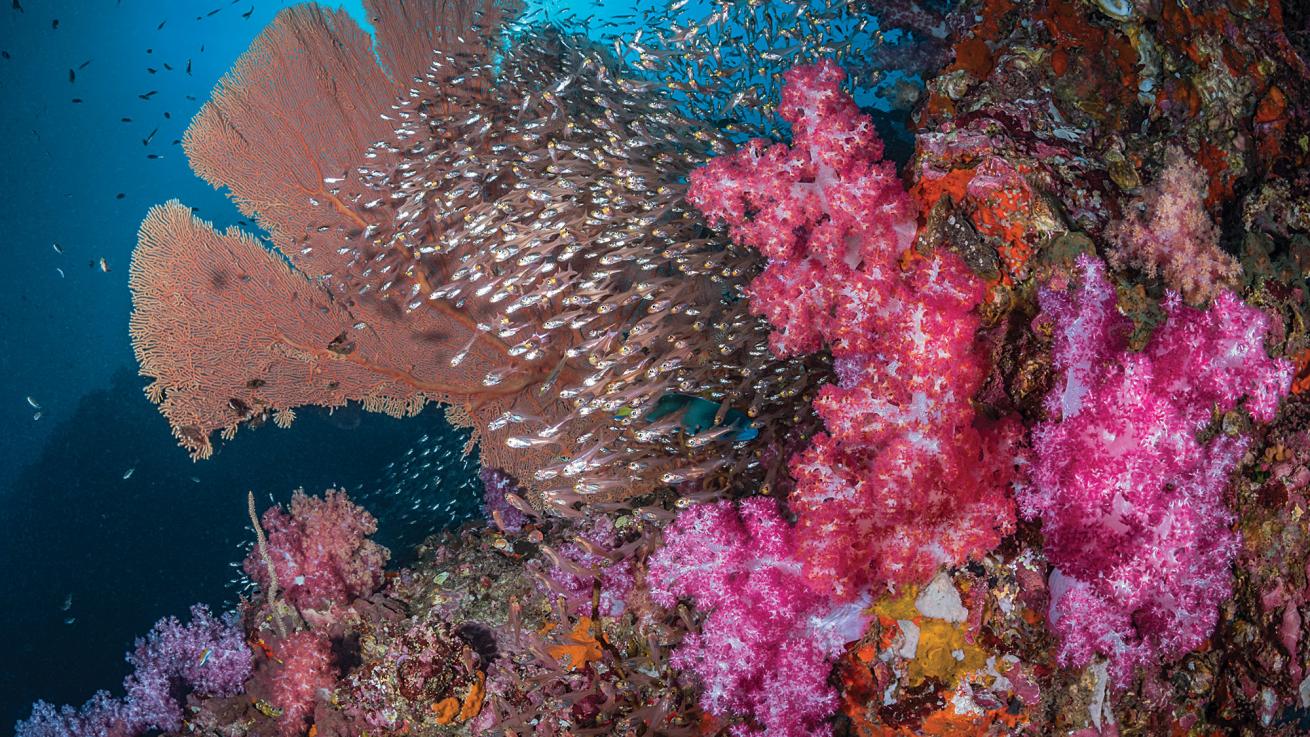
Alex TyrrellSea fans and corals adorn Richelieu Rock.
MANTA MADNESS
Day one delivers manta sightings on every dive, but the animals are wary at first, not venturing too near until the final dive, which delivers close passes in fading light. Even without the mantas in a playful mood, there’s still plenty of action, from hunting rainbow runners to dogtooth tuna and schools of jacks, plus macro subjects such as harlequin shrimps. Ric Parker, our tour leader, makes the call to spend another day at Black Rock with the hope of getting opportunities to capture ID photos of the unique pattern of markings on the underside of each manta ray. The decision is a wise one because they come out in force on day two, with close encounters from numerous individuals throughout all of our dives from the moment we enter the water at 7:30 a.m. until 5:45 p.m. when we reluctantly call it a day. Even Steve Leathwood, Deep Andaman Queen’s cruise director, who has been here countless times, had one of his most memorable dives.
“I was surrounded by a school of jacks so dense, I could see only 3 feet in any direction until they swirled into a tornado,” he says. “And when I looked up through the eye, I had a pair of mantas performing acrobatics above. It just doesn’t get any better.”
For the photographers on board, this was a very productive day. Having so many mantas around allows everyone to capture a variety of different shots: hovering at cleaning stations, acrobatics in the blue, sweeping passes over soft corals, and gliding through schools of glassfish. Repeatedly diving the site allows us to tune in to the mantas’ behavior, seeing patterns in their approach to the different cleaning stations and how they interact with one another.
It helps that manta expert Anna Flam from the Marine Megafauna Foundation provides guidance on how to have better interactions, instructing us to make eye contact and mimic their movements, encouraging these highly intelligent fish to be more inquisitive. It’s truly an epic day of diving and photography; when all is said and done, we log a record-breaking 38 different individuals in a single dive day at Black Rock.
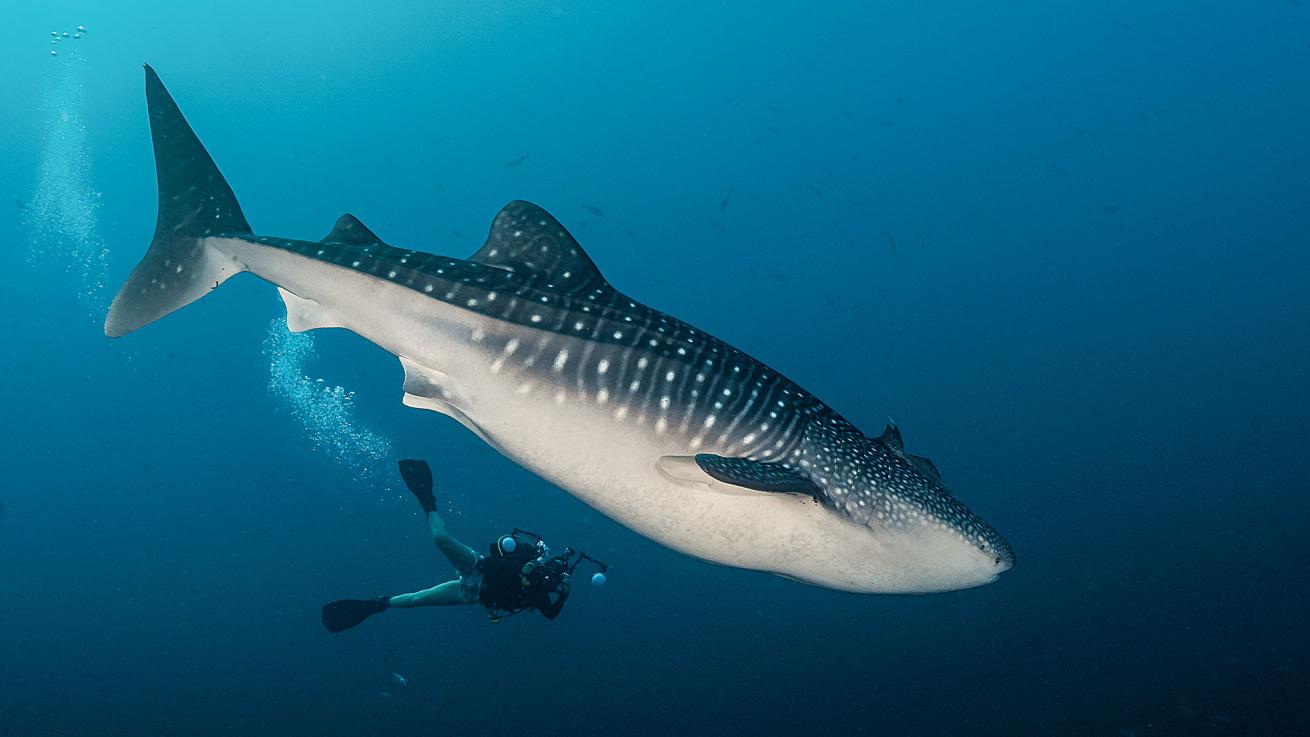
Alex TyrrellA diver captures photos of a whale shark.
ONE FISH, TWO FISH
As the light fades, we start the northbound journey to West Canister Island, a spot that the team visited last year and saw potential for more manta encounters thanks to its similar topography to Koh Bon’s famous ridge, which sees the highest frequency of manta encounters in Thai waters.
On the first dive of the day, we head to the northwest side of the island, where soft corals abound in vibrant magenta, lavender and yellow hues. When we reach the tip of the ridge, I gesture for my buddy to model for me. As he hovers above the expanse of soft corals while I dial in my exposure, I notice a dark shadow appear from behind. A manta ray flies right over my model a few seconds later, confirming our suspicion about this site. That day we dive here two more times, first with a group of divers mapping the site, and then a sunset dive, when the current picks up, causing an upwelling of colder nutrient-rich water that kick-starts the action, bringing out thousands of damselfish to feed and, in turn, attracting predators with schools of big-eye trevally racing back and forth.
We head back to Black Rock the next day to see if we can add to the manta count. But conditions deteriorate, with green water ruining the conditions for photography. Although we see mantas on all four dives, it’s nothing like the first two days. We wrap up diving earlier than usual to start the long journey over a perfectly calm sea to the seldom-visited Burma Banks.
Located 90 nautical miles west of Kawthaung, the Burma Banks is far from shore, making it accessible only by a few liveaboard vessels. It consists of a series of current-prone, submerged seamounts with flat plateaus at around 50 to 90 feet that drop off over the sides down to beyond 1,000 feet. We dive three different banks that are home to healthy hard corals and plenty of reef fishes, spotting whitetip reef sharks and a few nurse sharks resting under a coral head. The highlight for one lucky group comes in the form of a black marlin that circles the divers just after they descend.
We plunge into the water for our final dive at Silvertip Bank, a site named after its population of silvertip sharks (Carcharhinus albimarginatus) that used to be seen here on baited dives during the ’90s. It’s rumored that longline fishermen decimated the population, a sad story that seems all too common around the world these days. We have encouraging sightings of a few juvenile silvertips that seem to have already developed the same bold attitude the adults possess, coming in close to check us out on numerous occasions.
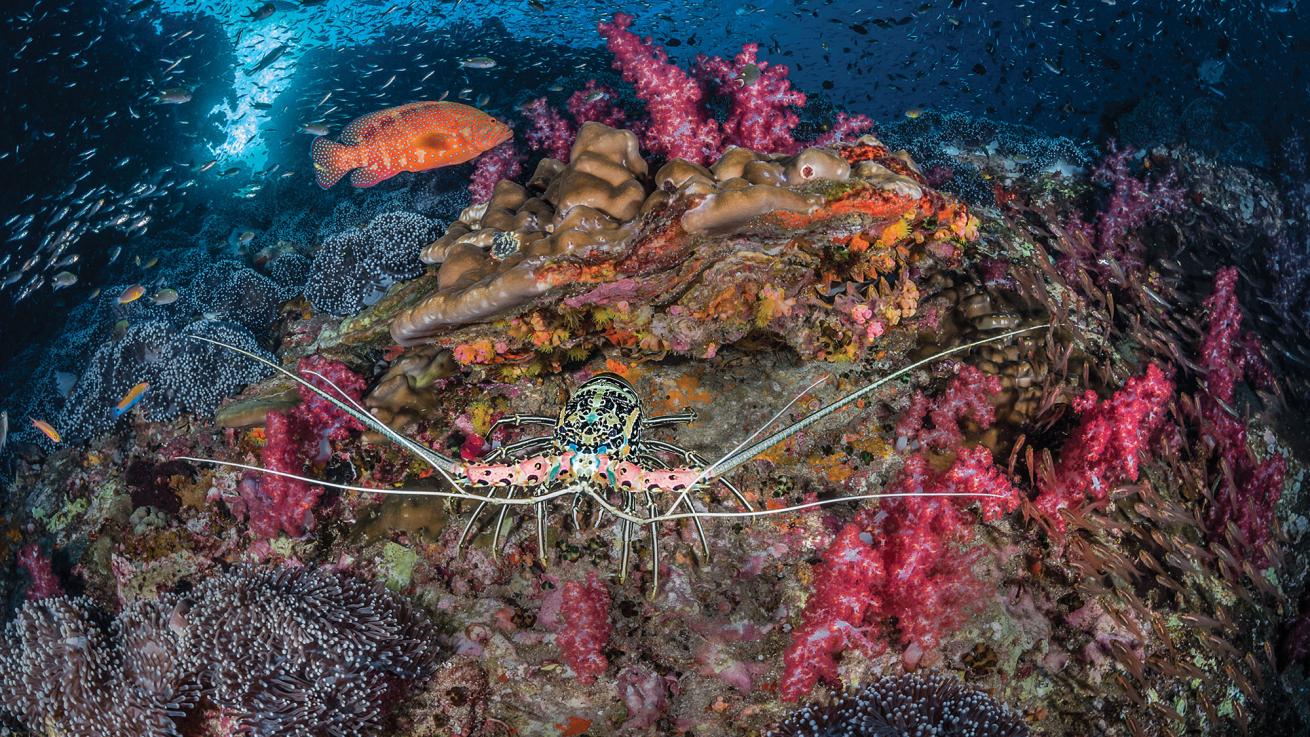
Alex TyrrellA painted spiny lobster peeks out at Richelieu Rock.
THAT’S A WRAP
An overnight journey takes us to our final two destinations in Myanmar, Fan Forest Pinnacle and Western Rocky, before our time in Burma comes to an unwelcome end. But the trip’s not over until we get the chance to dive a few more sites in Thai waters.
These sites are not as remote as the spots we visited earlier, making run-ins with other liveaboards and even dayboats inevitable. But this doesn’t mean the diving isn’t great, because Richelieu Rock in Mu Ko Surin National Park never fails to impress with a huge abundance and diversity of marine life.
Next up are two dives at Koh Tachai before heading to Koh Bon for the grand finale, where we’re graced with the presence of both a manta and a whale shark at the Pinnacle, providing a fitting end to an awesome expedition.
On the journey back to Khao Lak, we indulge in a few celebratory beers while plans are put in place for a return trip next year.
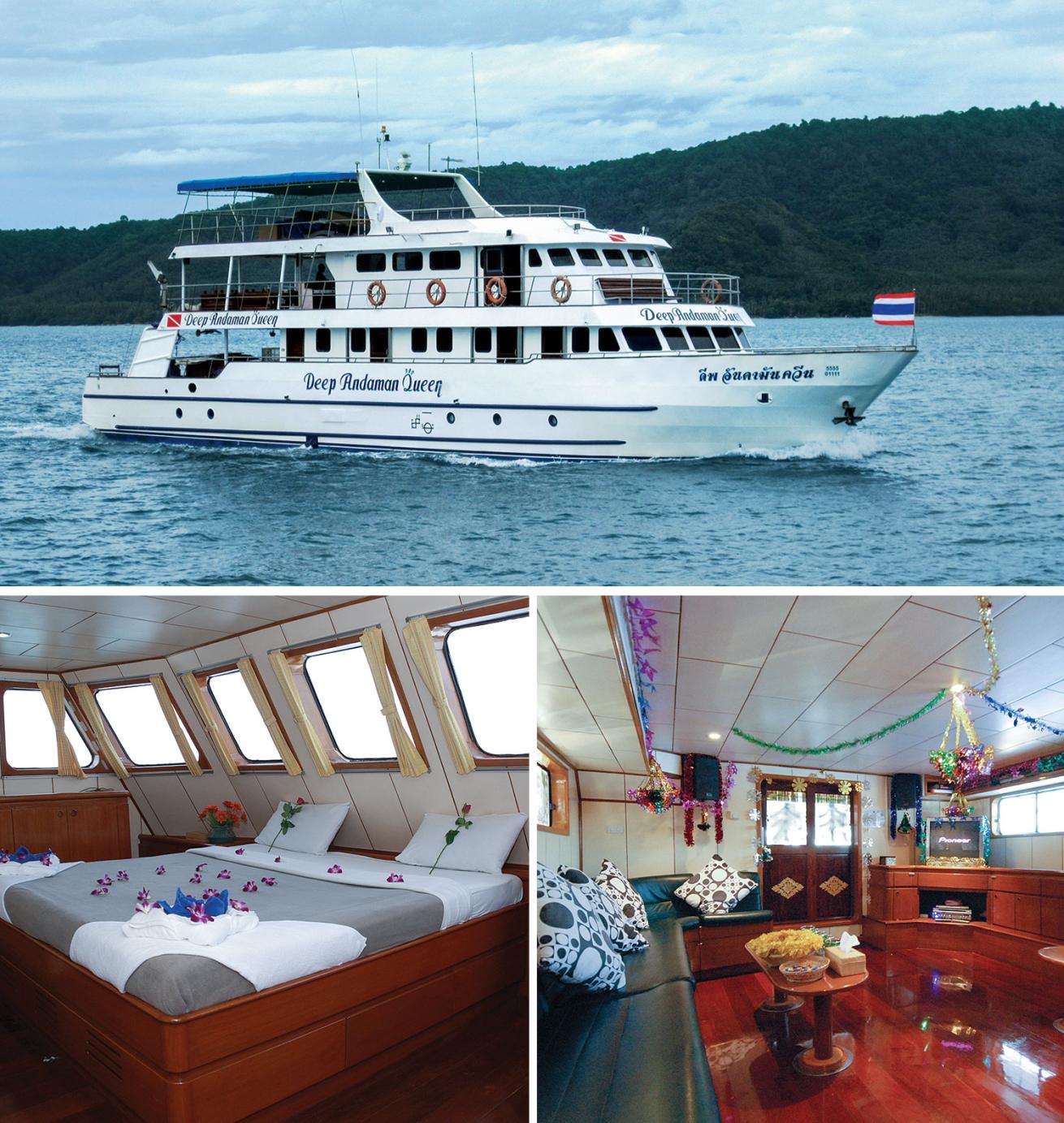
Deep Andaman Queen(Clockwise from top) Deep Andaman Queen; the boat’s salon; Deep Andaman Queen’s master cabin.
NEED TO KNOW
When To Go: The Andaman Sea dive season runs October through May; peak time for calm seas is January through mid-April. This is especially true for exposed dive sites such as Black Rock and the Burma Banks.
Travelers Tip: Flight time from LAX to Bangkok is around 20 hours, with another hour needed to get to Phuket. Thailand uses 220 volts AC 50 Hz electricity. Plugs can be either two-prong or three-prong, with round or flat pins. Note that 110-volt transformers are not common, so bring one if your appliances are not dual voltage. The Myanmar visa/national park fee is $250 per seven-day trip (payable only in new unmarked notes in denominations of $50 and $100).
Dive Conditions: Water temps are normally around 82°F, but there can be upwellings that drop to a chilly 75°F, although these are brief. A 3 mm wetsuit or even rash vest with shorts is adequate for most dives. Currents can be strong if diving around the full moon, so it’s best to plan your trip to avoid this stage of the lunar cycle. Most Myanmar sites are far from a recompression chamber, so ensure you are diving conservatively, ideally on nitrox, to avoid the need to push limits.
Operator: Deep Andaman Queen runs trips to the Mergui Archipelago in-season, or it can be chartered for tailor-made itineraries, as was the case with our trip run by Off the Charts Expeditions.
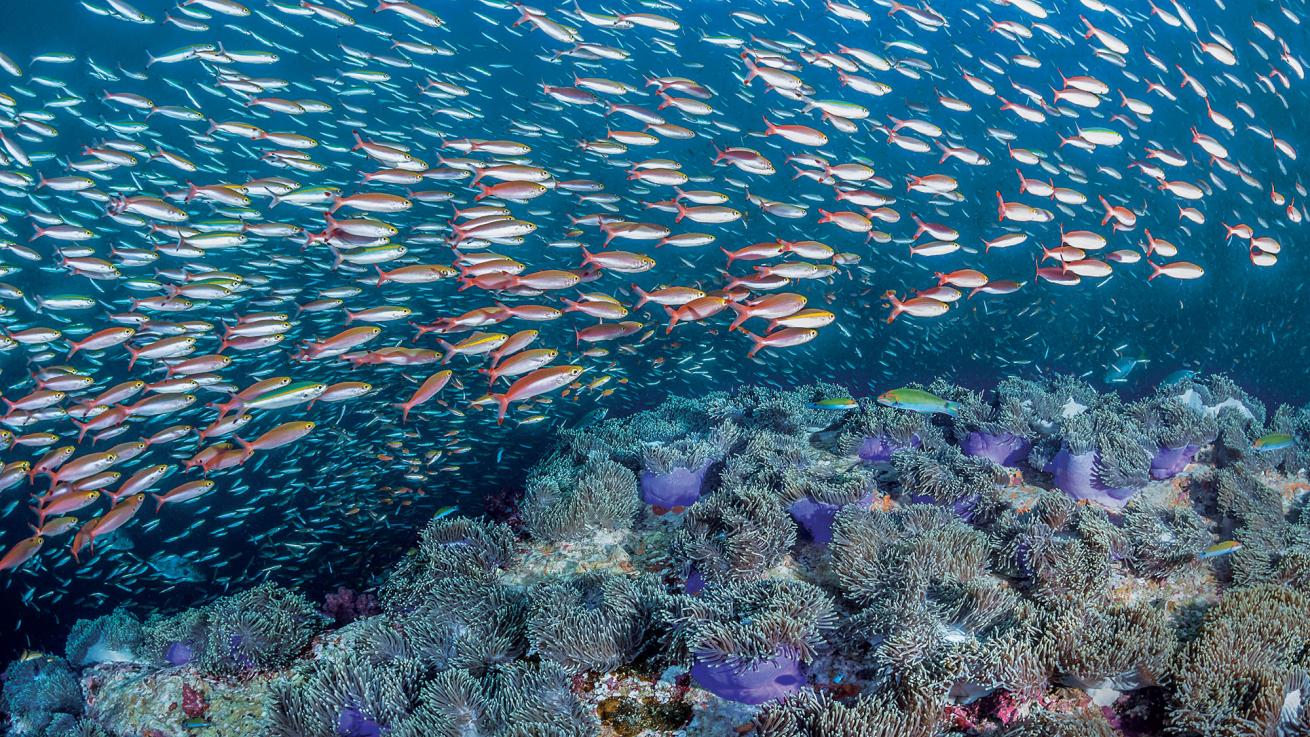
Alex TyrrellFusiliers school at Black Rock.
Price Tag: The price ranges from $2,000 to $3,000 depending on itinerary and cabin type.
5 Reasons to Book a Photo-Centric Liveaboard Trip
1) The Goods: Underwater photo professionals offer focused presentations to speed learning, provide tips and tricks for shooting specific subjects, advise on best setups for the dive site and, if needed, help with camera issues.
2) Second Nature: Repeating dive sites lets you find the most photogenic spots and revisit subjects to improve compositions. If you spot subjects that don’t suit your setup, you can come back with the appropriate camera configuration on the next dive.
3) Birds of a Feather: Diving with other photographers is generally more productive than mixing with standard divers, which commonly results in one of two outcomes: the group leaving you behind or you being rushed from your subject to catch up.
4) Long Range: The range of liveaboard boats allows you to dive the best sites in a region that might be long distances apart and inaccessible via dayboat. Liveaboard trips also provide a flexible schedule to dive sites at the optimal time for tides, currents and avoiding other dive groups.
5) Easy Cruising: Liveaboards let you travel between sites in the comfort of a large boat, letting you change lenses, put in fresh batteries, etc., in a dry environment.

